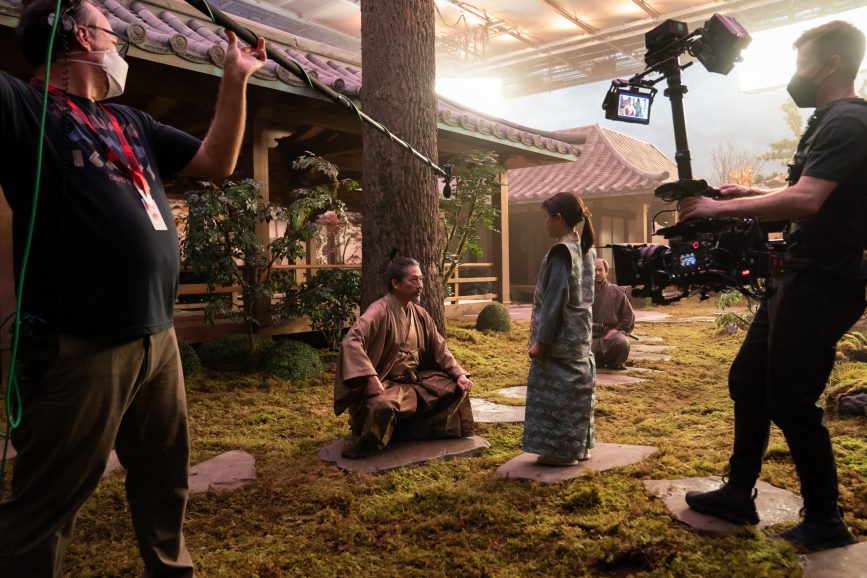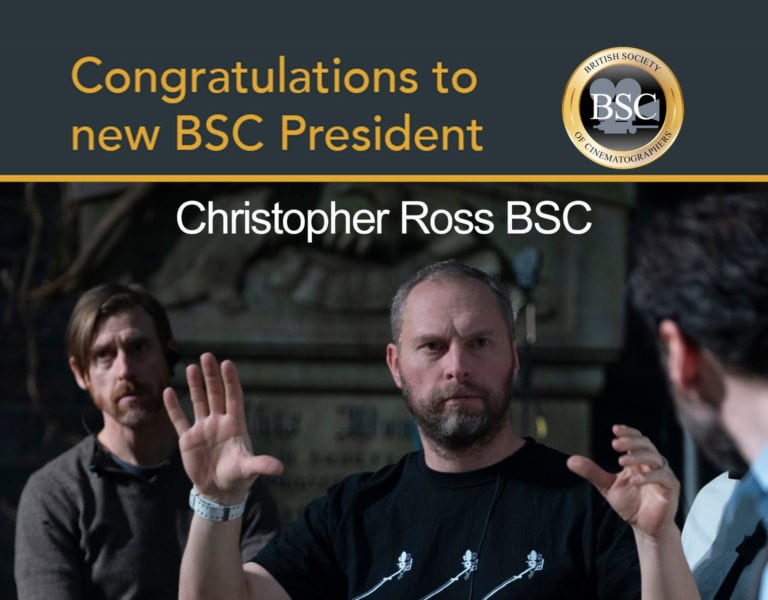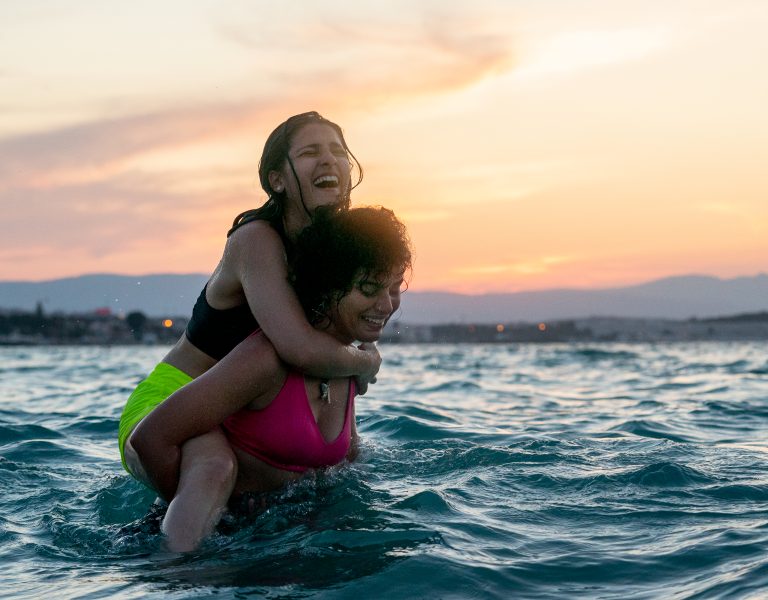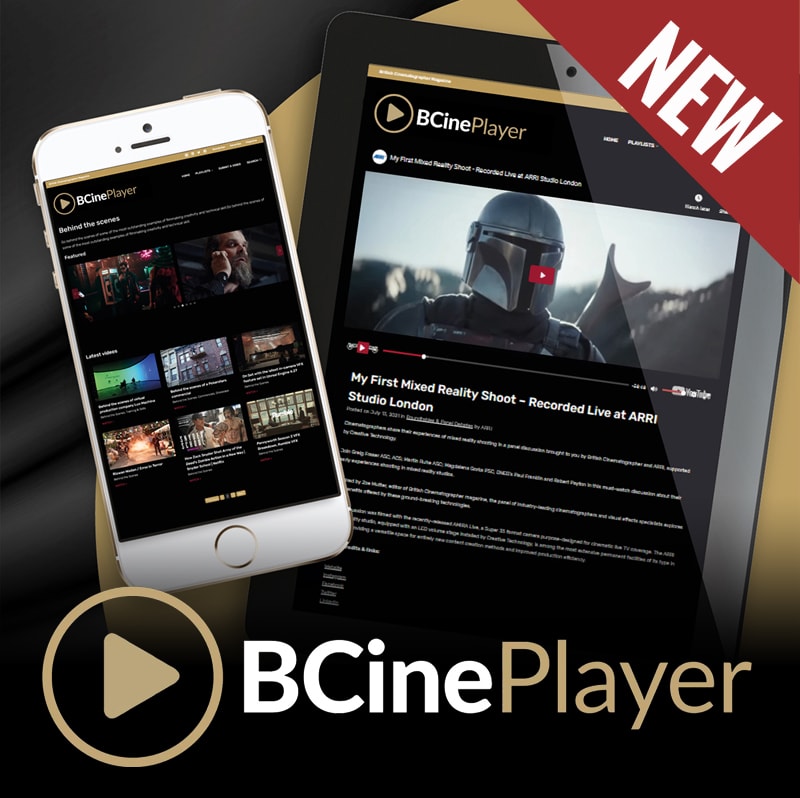FEUDAL FEUDS
Sprawling epic Shōgun allowed cinematographer Christopher Ross BSC to craft a rich tapestry of 17th-century feudal Japan.
An English pirate is shipwrecked on the shores of feudal Japan and uses the local political system to ingratiate himself in a game of thrones among warlords competing to be top dog (or shogun). Ultimately, everyone just wants to survive.
The 1980 NBC series starring Richard Chamberlain, based on James Clavell’s 1975 novel, was one of the first international TV experiences, a global hit that spawned miniseries like The Thorn Birds and North and South and a trend that continues to this day.
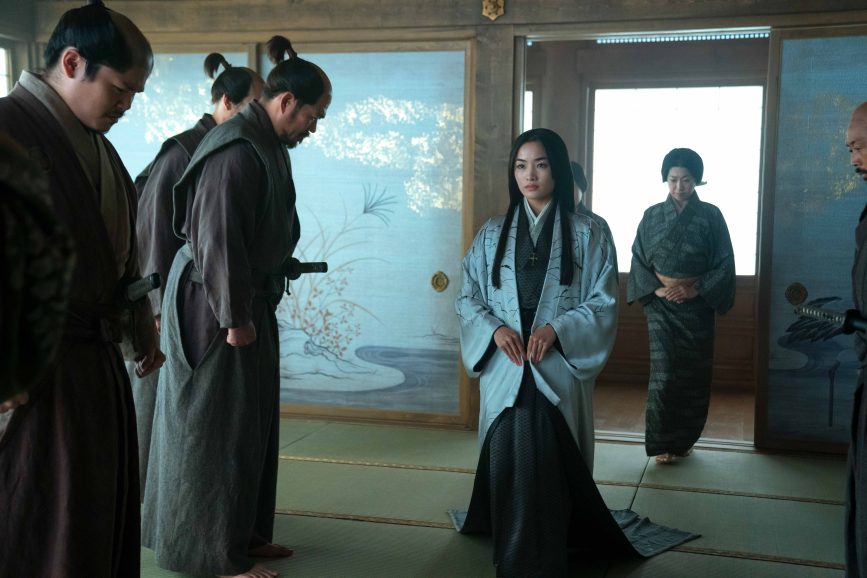
“The original series was very much a white saviour story,” says Christopher Ross BSC. “Showrunner Justin Marks was very much of the opinion that the lens should be flipped and that the civilised Japanese feudal structure should look on this primitive pirate washed up on their shore as a savage. Our telling would be a Joseph Conrad, Heart of Darkness story.”
At the same time, Marks wanted to adhere to the narrative concepts of the traditional Japanese Jidaigeki (the Samurai genre made most famous by Akira Kurosawa). “The western equivalent to the vocabulary of the Jidaigeki film is expressed in Jacobean tragedy,” says Ross, who boarded the project to work with director Jonathan van Tulleken and film the pilot for Disney brand FX.
Van Tulleken and Ross met in 2009 on Channel 4 show Misfits and continued their relationship on episodes of Top Boy (2013) and Trust (2018).

“We talked a lot about the form of the traditional Jidaigeki film, such as the use of long focal lengths and low camera positions, and an eclectic mix of cultural references but the one thing we came back to time and time again was that we wanted the story to feel very present, very first person and visceral,” Ross explains.
Episode one introduces the principal characters Blackthorne, also known as Anjin-san (Cosmo Jarvis), Mariko (Anna Sawai) and Toranaga (Hiroyuki Sanada). “One of the things we wanted was to create a first-person perspective in each of their worlds so you are very rooted with each of them,” he says.
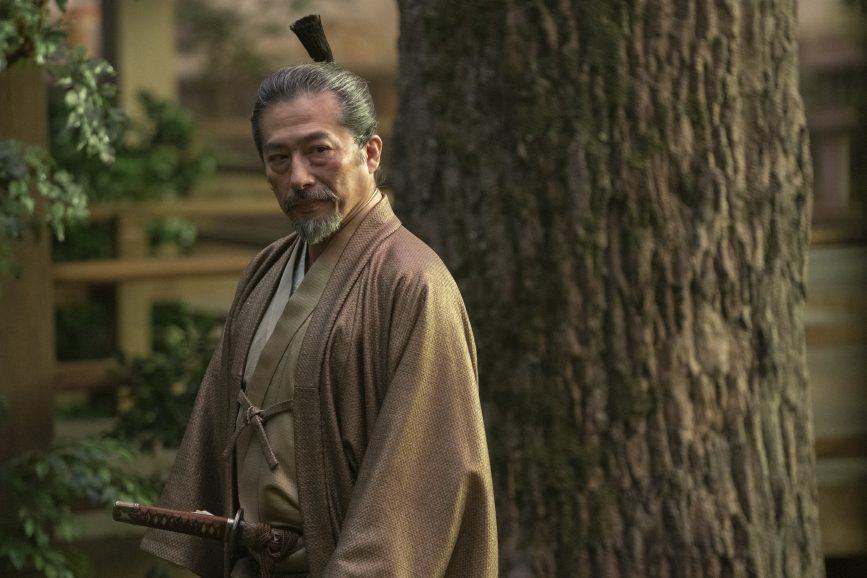
“We also wanted the camera to be enigmatic and for the imagery to be leading the audience down a series of blind tunnels so they use their imagination to fill in the gaps.”
Macbeth (2015), Apocalypse Now, The Revenant and The Assassination of Jesse James were referenced for depictions of the integral relationship between nature and human protagonists.
“When creating any period drama it is really important to me that you bury the characters in the imagery so that it feels like they created the universe, rather than looking as if you created an aesthetic that sits on top of the imagery.”
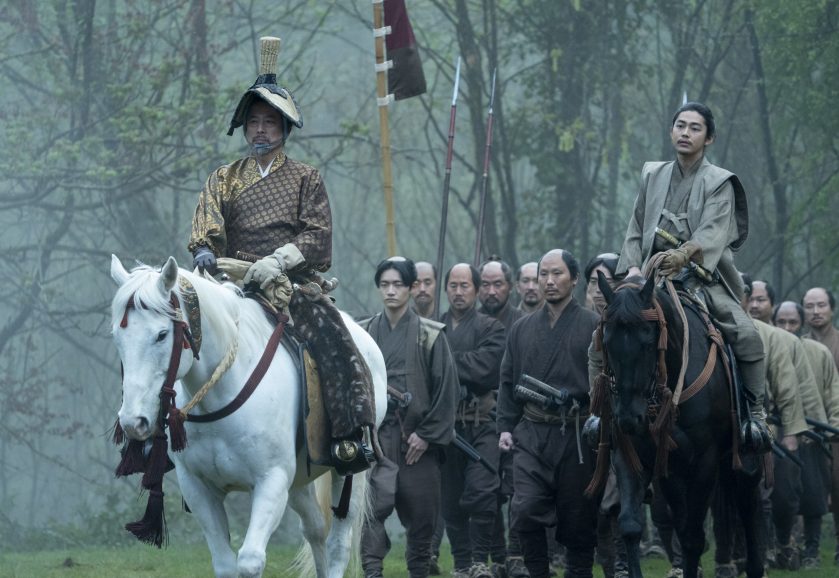
Immersive worlds
Ross was aided by production designer Helen Jarvis who had built scale models of all the sets based on concept art that was itself the product of research. Landing in Vancouver for ten weeks of prep in autumn 2021, Ross used those to model how light would bounce around inside the sets. Historians were able to advise him on the sort of lanterns and night lights used in the late 16th century.
He was struck by how traditional Japanese architecture framed its buildings with walkways, porches or verandas called engawa, the rooflines of which are designed to block direct sunlight from hitting the walls of a room and fading the colour of its fabrics.
“What I took from a light study of these spaces is that the rooms are generally lit by a soft light from the sky, if anything a sun that skims low off the decking off the engawa itself,” Ross says.

“I also noted the way the wood panelling of the walls leads into the wood panels of the ceilings. The ceilings are dark wood and the flooring is covered with beautiful bamboo and cotton tatami mats. This means you must invert the western lighting protocol by having light bounce from the floor while the wraparound shadow reflecting skin tones comes from the ceiling.”
This knowledge guided Ross in lighting the two sound stages at Mammoth Studios, Vancouver. Locations in Japan were scouted but found to have little in common with the wooden building and wilderness of Shōgun’s setting.
“The main reason we didn’t consider shooting a volume was the scale,” he says. “The set stages are about half the size of a standard football pitch.” One stage contained the primary set for Osaka palace and its elaborate garden (built inside so production could manage the inconsistent local weather for the shooting schedule which began in September and ended the following summer). The other stage housed the vast ceremonial meeting hall seen in the opening episode and another series of gardens. Additional spaces were used for sets of the Catholic mission and the prison. A set of Osaka fortress was built on a backlot. Other locations included for the opening shipwreck at Ucluelet on Vancouver Island and at Rocky Point in nearby Port Moody.
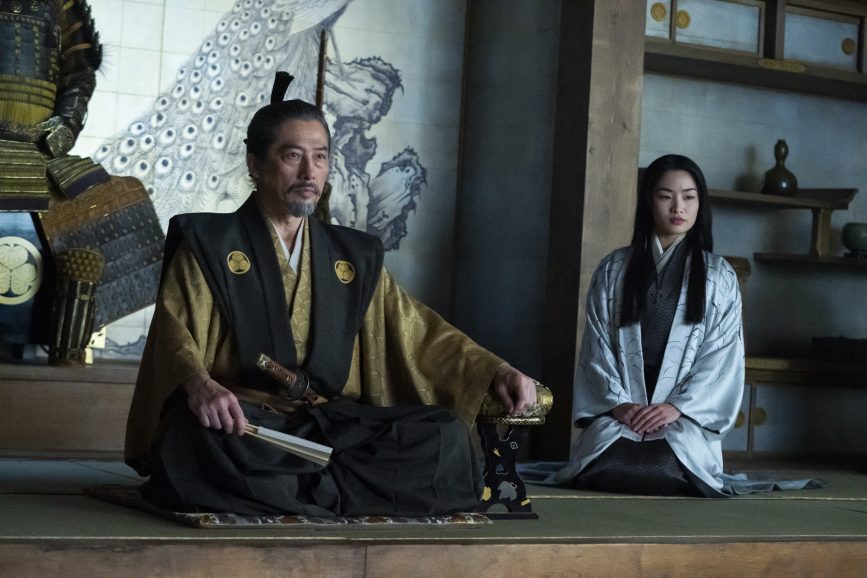
“We worked hard to create a very natural atmosphere for the exterior scenes on the soundstage. It’s quite a challenge. When you inhibit the distance that light can travel, the light sources become much more apparent. Additionally, there is very little sunshine in Shōgun. It’s only in a few scenes. There’s a dominant soft sunlight that is utilised as a backlight for most of the garden scenes and interiors.”
The solution was to construct a system of “punchy” softboxes. Normally you’d select a SkyPanel or Vortex to create a softbox (which Ross did to create a skylight in one interior) but for the illumination he wanted the softboxes that had to “punch” into the spaces. With gaffer David Tickell, Ross employed Studio Force LED units in 20ft by 10ft banks with motors to move position on both stages.
“That was the key to lighting of the show,” Ross says. “The use of those mobile softboxes and a sort of permanently three-quarter soft-sun approach to lighting.”

Anamorphic experiments
The DP appreciated the flexibility of the Sony Venice, having just used it to photograph The Swimmers for director Sally El Hosaini, but says he is camera and lens agnostic.
“On each project I like to rediscover the process all over again. We shot a lot of lens tests for Shōgun to find this visceral, first-person look.”
He experimented with anamorphic lenses (which Kurasawa first used in his work on 1958’s Hidden Fortress), noting the differences of stigmatism in the defocus zones.

“Each set of anamorphic blur backgrounds in a more horizontal than vertical direction to create an impressionistic feel,” he says. He and van Tulleken found the best match in the Hawk class-X range, which they felt sat halfway between the Hawk Lite and Vintage in terms of flare and defocus: “We both fell in love with the incredible close focus and intimacy you can get with the class-X.”
The choice of anamorphic lens naturally led to a conversation with FX about aspect ratio but the broadcaster was not keen on 2.35 or 2.39, so they settled on a 2.1 aspect ratio, which, “combined with anamorphic and 4K finish, led us to creature a unique resolution frame line on the Venice,” Ross says.
Another key to the show look was “to feel a granularity and rawness of the image” by applying texture from LiveGrain on-set, tweaked in post. With colourist Élodie Ichter (at Picture Shop) they conjured the magic formula based on Eastman Colour Negative 100T stock used to shoot Taxi Driver. Company 3’s senior colourist Jill Bogdanowicz carried out the grade for episodes 5-10.

Further costume and set tests in pre-production helped refine their judgement. Indeed, the harmonious cooperation of HoDs in what was a pandemic-delayed and then extended prep gave Ross among his best experiences of filmmaking yet. The results can be seen on screen, since the storytelling is coherent, considered and compelling.
“Once the HoDs have created as much of the on-set mood and environment as possible then hopefully that filters down and ideally makes everyone’s lives easier.”
After shooting episodes one and two pretty sequentially, Ross handed over to Sam McCurdy ASC BSC, Marc Laliberté CSC and Aril Wretblad FSF.

McCurdy was still in Vancouver shooting Peacemaker when Shōgun came to town, so had time to prep with Ross and director Van Tulleken. “It was great because we all got to share those initial ideas and concepts,” the DP recalls. “Everyone spoke about authenticity and this was something that we all knew was important to get across.”
McCurdy collaborated with director and friend Fred Toye on episodes four and five. Having worked together a number of times previously, they already had an established shorthand which made prep easy. Shooting mostly through the winter of 2021-22, they decided early on to use the weather as a key character in the story. “Trying to utilise snow and inclement weather [forced] us to use colours and tones that we thought suited our stories. The cold blues of the Pacific North West would become a key guide to our palette.”
He admits with a smile that the challenges of the shoot were often self-imposed: “Shooting in snow and rain to keep texture and character in the story was pivotal for us, but it came with its downside. We utilised cranes on 4×4 tracking vehicles to ensure we moved around quickly and this became our main shooting tool for the show in the end.”
McCurdy enjoyed “every second” of the shoot, but one of his favourite scenes to capture was the arrival of Lady Ochiba (Fumi Nikaido) in episode nine. “We shot exterior night (but on stage with rain) and the whole of the castle gardens were dark other than moonlight and torchlight,” he recalls. “We walked the actress down a darkened porchway to the castle entrance and to see the silhouette of the actress in her costume was something quite special; it felt like a powerful and yet beautiful introduction to her character.”
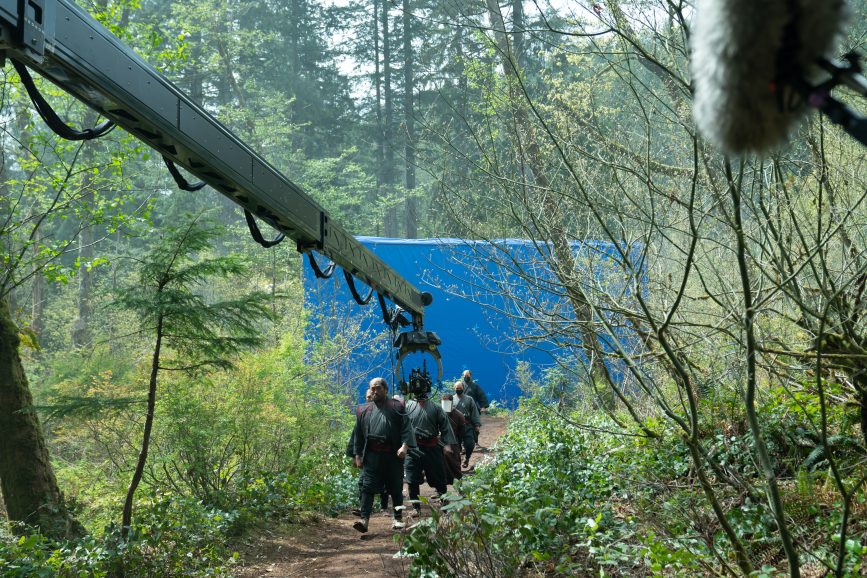
Cablecam capture
Aside from a mood reel, set plans and look book Ross shared with the other DPs an app detailing the lighting, gripping and camera operating plans for every scene.
“As each DP watches rushes that we photographed they can see what devices we are using,” says Ross. These included lots of Steadicam, cranes, some drones and the occasional cablecam.
A bespoke cablecam rig was built by senior SFX Brandon Allen for an establishing shot of Osaka which closes episode one. Ross explains, “We wanted to establish Osaka in a very characterful way. The idea was to start the shot on a VFX drone that sails past a shipwrecked vessel with Osaka harbour in the distance, then segue to a cablecam as we fly in over the water and over the heads of fishermen and alongside Blackthorne on a boat being escorted to prison. The camera slips alongside jetty with them and spins and holds on Blackthorne in close up.”
In the final edit this sequence has been cut but Ross’ mission remains intact. “We wanted the audience to go along on this journey which is unfolding in front of their eyes.”
Shōgun is out now on Disney+.
